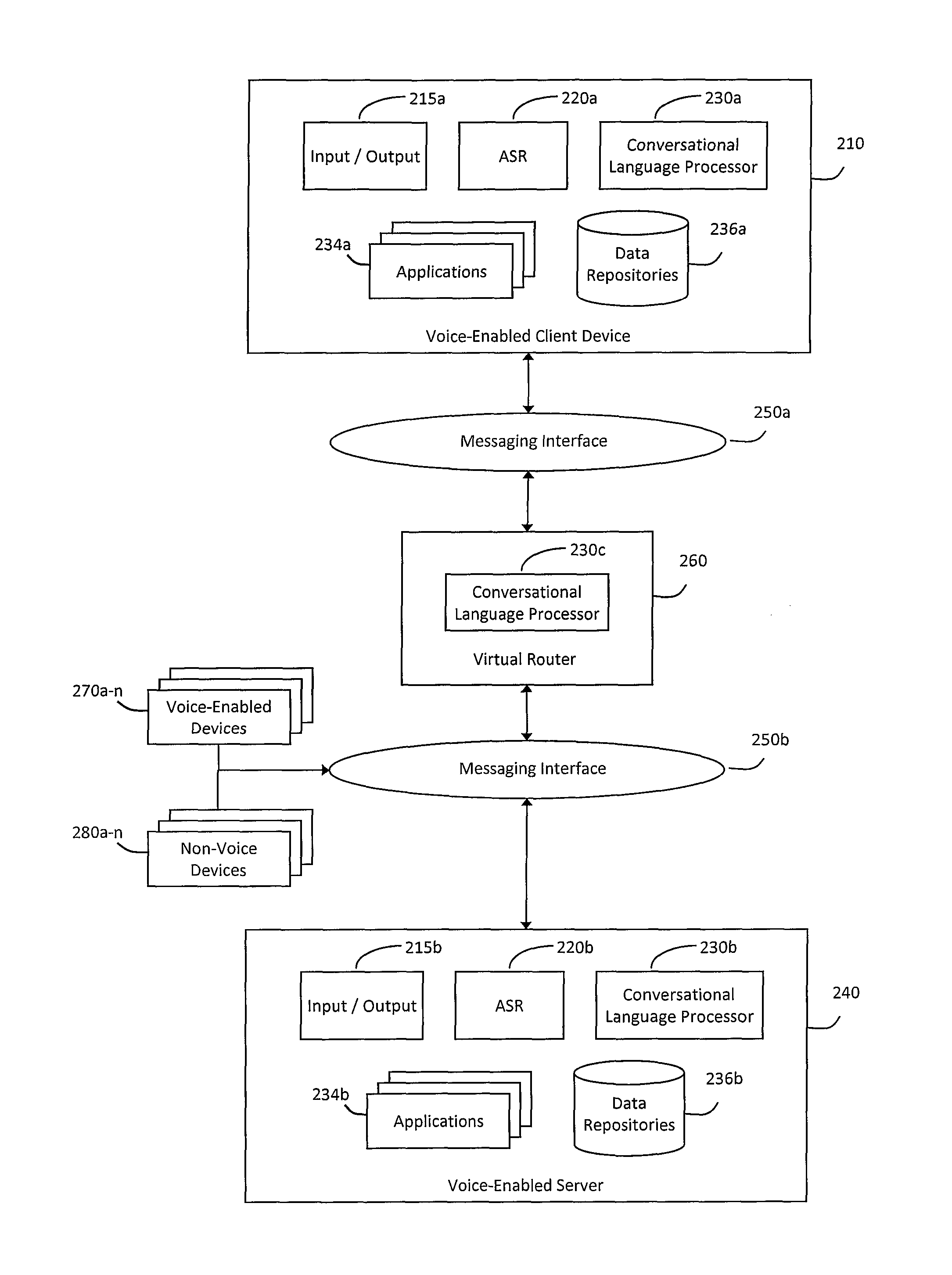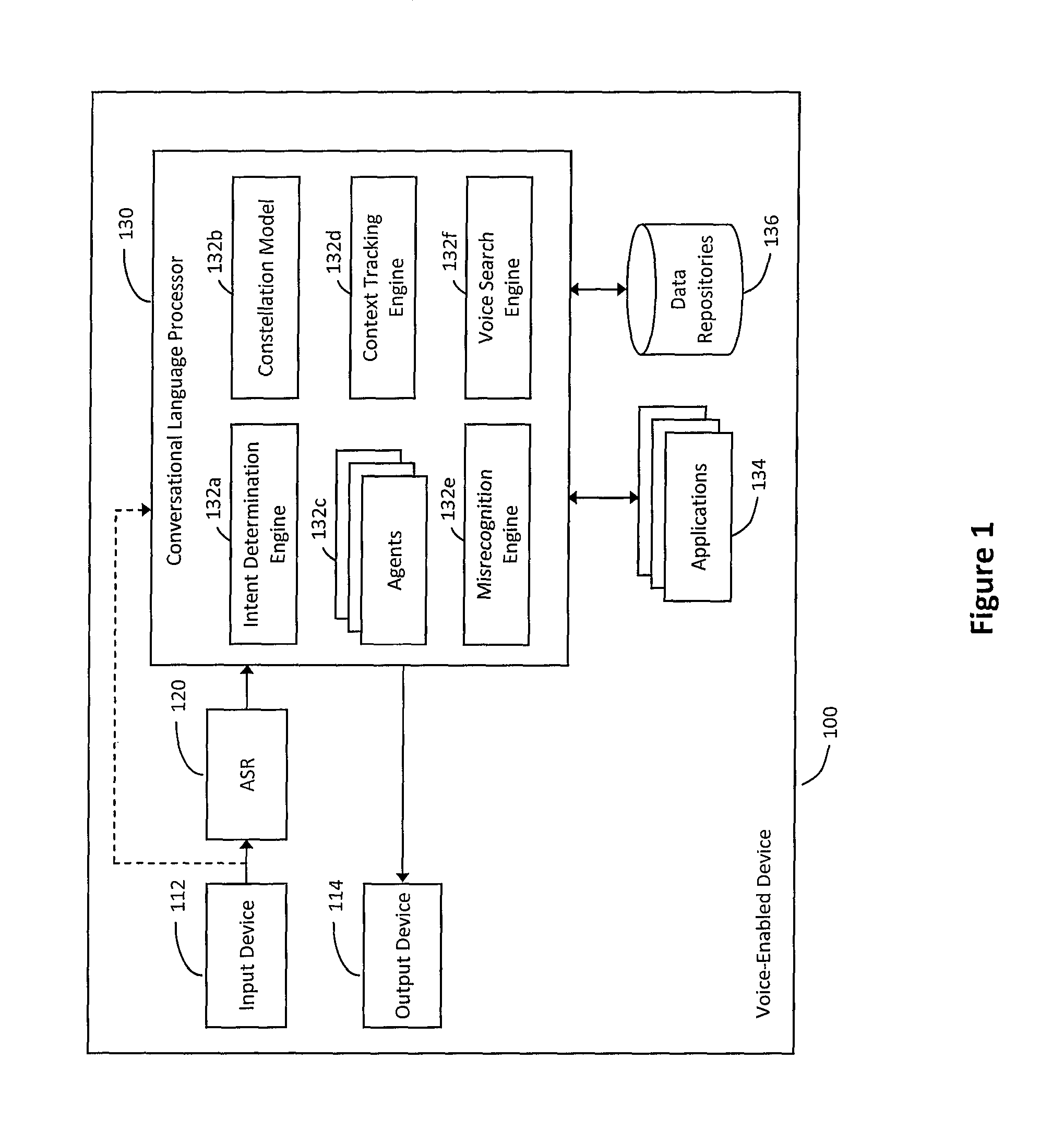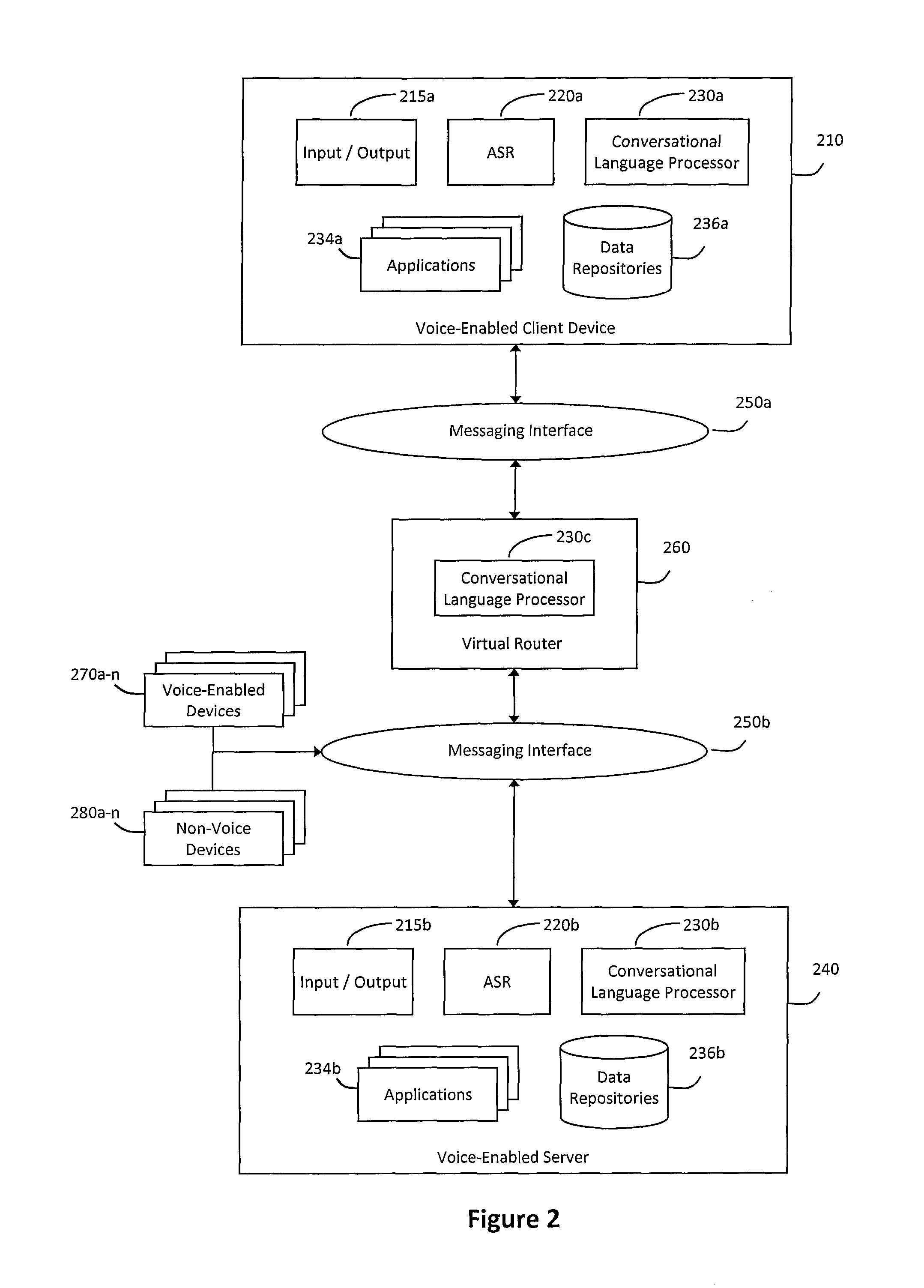System and method for hybrid processing in a natural language voice services environment
nvironment technology, applied in the field of hybrid processing in a natural language voice services environment, can solve the problems of preventing users from fully exploiting the capabilities of their electronic devices, affecting the mass adoption of many technologies, and affecting the quality of voice services
- Summary
- Abstract
- Description
- Claims
- Application Information
AI Technical Summary
Benefits of technology
Problems solved by technology
Method used
Image
Examples
Embodiment Construction
[0019]According to one aspect of the invention, FIG. 1 illustrates a block diagram of an exemplary voice-enabled device 100 that can be used for hybrid processing in a natural language voice services environment. As will be apparent from the further description to be provided herein, the voice-enabled device 100 illustrated in FIG. 1 may generally include an input device 112, or a combination of input devices 112, which may enable a user to interact with the voice-enabled device 100 in a multi-modal manner. In particular, the input devices 112 may generally include any suitable combination of at least one voice input device 112 (e.g., a microphone) and at least one non-voice input device 112 (e.g., a mouse, touch-screen display, wheel selector, etc.). As such, the input devices 112 may include any suitable combination of electronic devices having mechanisms for receiving both voice-based and non-voice-based inputs (e.g., a microphone coupled to one or more of a telematics device, pe...
PUM
 Login to View More
Login to View More Abstract
Description
Claims
Application Information
 Login to View More
Login to View More - R&D
- Intellectual Property
- Life Sciences
- Materials
- Tech Scout
- Unparalleled Data Quality
- Higher Quality Content
- 60% Fewer Hallucinations
Browse by: Latest US Patents, China's latest patents, Technical Efficacy Thesaurus, Application Domain, Technology Topic, Popular Technical Reports.
© 2025 PatSnap. All rights reserved.Legal|Privacy policy|Modern Slavery Act Transparency Statement|Sitemap|About US| Contact US: help@patsnap.com



